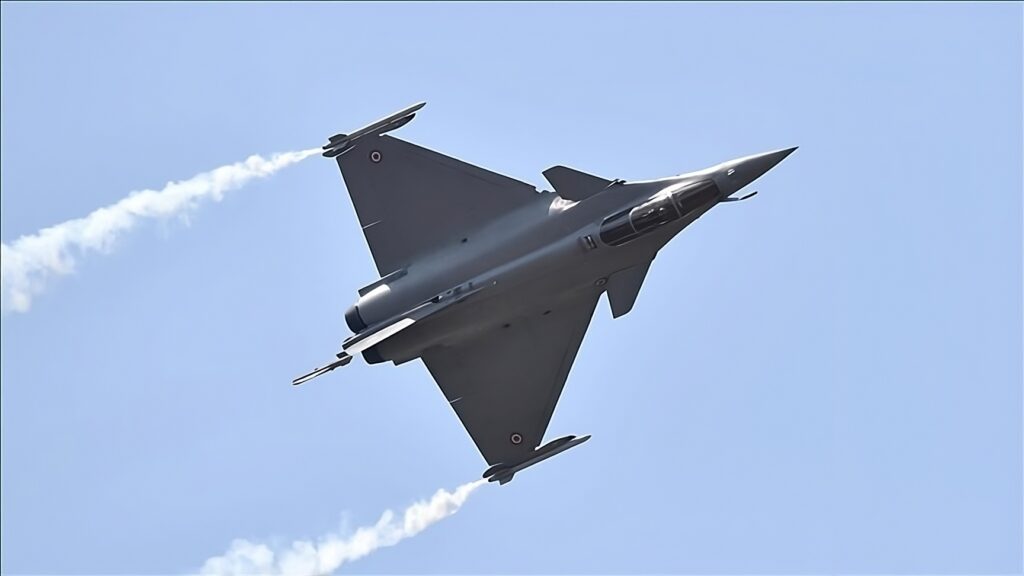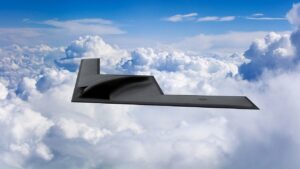China’s Arms Race Ambitions: A New Cold War in the Making
In the high-stakes arena of global arms sales, where power, prestige, and profit collide, China’s military machine is flexing its muscles with unsettling ambition. You get the sense that Beijing isn’t just playing to win; it’s playing to reshape the world order. Recent skirmishes between India and Pakistan have become an unexpected stage for China to showcase its military hardware, particularly its Chengdu J-10C fighter jet, while casting doubt on Western competitors like France’s Rafale. But this isn’t just about jets or missiles—it’s about a broader, more insidious campaign to tilt the geopolitical scales. China’s calculated push to undermine French arms exports through disinformation and aggressive lobbying reveals a nation determined to challenge the West’s dominance, not just in Asia but globally. Frankly, it’s a move that feels less like a business strategy and more like a declaration of a new Cold War.
A Proxy War’s Unexpected Spotlight
The India-Pakistan clashes this past spring, sparked by a deadly terror attack India pinned on Pakistan, were brief but brutal. Lasting mere days, the conflict saw India’s French- and Russian-made arsenal pitted against Pakistan’s largely Chinese-supplied weaponry. It was less a war than a high-stakes proving ground, a real-world test of military might that doubled as a marketing pitch for arms exporters. India’s strikes reportedly penetrated Pakistan’s defenses, raising questions about the effectiveness of China’s HQ-9B air defense system. You’d think that would be a black mark for Beijing, a public embarrassment for a nation desperate to prove its technological prowess. But wars, even proxy ones, are rarely that simple.
Enter the Chengdu J-10C, nicknamed the “Vigorous Dragon.” According to some accounts—Pakistan’s boasts and U.S. intelligence whispers—this jet held its own against India’s Rafale fighters. Pakistan claims it downed five Indian planes, including three Rafales, though evidence is as thin as a politician’s promise. U.S. officials, more conservatively, suggest two Indian aircraft fell to the J-10C. A French Air Force official, meanwhile, cites three downed Indian planes: a Russian Sukhoi, an older French Mirage 2000, and one Rafale. If true, this marks the Rafale’s first combat loss—a blow to France, which has sold the jet to eight nations, including India, Qatar, and Indonesia. The truth is murky, but what’s clear is that China sees an opening to exploit.
Beijing’s Disinformation Blitz
Here’s where things get troubling. China isn’t content to let battlefield results speak for themselves. According to French intelligence, Beijing has launched a sophisticated campaign to undermine the Rafale’s reputation, using its embassies to spread doubts among nations that have purchased or are considering the jet. Defense attachés have been lobbying countries like Egypt and the UAE, whispering that French weapons are overpriced and underperforming. Online, the effort is even more brazen. Social media platforms, particularly X, are flooded with viral posts, doctored images of supposed Rafale wreckage, and AI-generated videos simulating combat losses. Over a thousand new accounts reportedly sprang up during the India-Pakistan clashes, all pushing a narrative of Chinese superiority. It’s the kind of coordinated propaganda that feels ripped from a cyberpunk novel, except it’s happening right now.
What’s galling is the pettiness of it all. This isn’t just geopolitics; it’s high school gossip with global consequences. China’s tactics—spreading rumors, faking evidence—mirror the playbook of a teenager trying to tank a rival’s prom king campaign. But the stakes are deadly. By tarnishing the Rafale, China aims to erode France’s influence in the Indo-Pacific, where nations like India and Indonesia are wary of Beijing’s growing shadow. France, for its part, uses arms sales to cement alliances and project power, much as the U.S. does. Every lost sale is a dent in Paris’s global clout, and China knows it.
The Arms Race in Context
To understand China’s gambit, you need to step back and see the bigger picture. Between 2019 and 2023, China accounted for 5.8% of global arms exports, trailing only the U.S., France, and Russia, according to the Spectator Index. That’s no small feat for a nation that, just decades ago, was a minor player in the arms trade. The U.S., with its unmatched defense industry, remains untouchable. Russia, despite its economic woes, holds steady as a supplier to nations wary of Western alignment. France, tied with Russia for second place, has carved out a niche with high-quality, versatile weapons like the Rafale. But China, hungry for influence, sees France as a vulnerable target—a nation it can outmaneuver without directly confronting the U.S.
This isn’t just about market share. Arms sales are diplomacy by other means, a way to bind nations to your orbit. When France sells Rafales to India or Qatar, it’s not just selling planes; it’s buying influence, securing partnerships, and countering China’s reach in the Indo-Pacific. Beijing’s response—disinformation, lobbying, and a hard sell of its own weapons—is a calculated move to disrupt this dynamic. If Chinese jets replace French ones, it’s not just a win for Beijing’s defense industry; it’s a step toward reshaping alliances in Asia and beyond.
A New Cold War?
What’s most unsettling is how this fits into a larger pattern. The U.S., wary of China’s growing military clout, is reactivating Cold War-era bases in the Pacific, a clear signal that Washington sees a new great power rivalry brewing. China’s actions in the arms race are just one front in this escalating contest. By challenging France’s arms exports, Beijing isn’t just after profit; it’s after dominance. The India-Pakistan conflict, brief as it was, offered a glimpse of this new reality: a world where proxy wars double as product demos, and disinformation campaigns shape perceptions as much as missiles do.
The irony is that China’s tactics may backfire. The Rafale’s combat loss, if real, is a setback, but France’s jets remain among the world’s best, backed by decades of engineering and combat experience. China’s J-10C, while impressive, is untested in large-scale conflicts, and its air defense systems clearly have gaps. Plus, Beijing’s heavy-handed propaganda risks alienating the very nations it’s wooing. Countries like India and Indonesia aren’t naive; they know a sales pitch when they see one, and they’re unlikely to swap proven Western tech for Chinese promises without serious scrutiny.
A Call for Vigilance
So where does this leave us? You get the sense that we’re watching the opening moves of a new Cold War, one fought not just with weapons but with narratives, alliances, and economic leverage. China’s campaign against the Rafale is a case study in how far Beijing is willing to go to assert itself—blending military posturing with digital skullduggery. It’s a reminder that power today isn’t just about who has the better jet; it’s about who controls the story.
For the West, the challenge is clear: counter China’s disinformation without stooping to its tactics, and double down on the alliances that arms sales help sustain. For nations caught in the middle—India, Qatar, Indonesia—the choice is tougher. Do you bet on China’s rising star, or stick with the West’s proven track record? The answer will shape the Indo-Pacific’s future, and maybe the world’s.
As for the rest of us, it’s worth asking: what happens when the line between truth and propaganda blurs so completely that even a fighter jet’s reputation can be weaponized? That’s the kind of question that keeps you up at night, wondering if the next war will be fought not just in the skies, but in the shadows of our screens.



